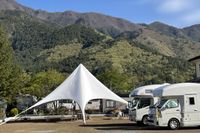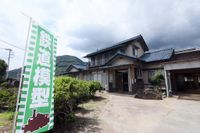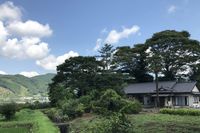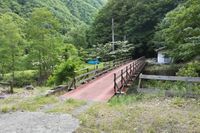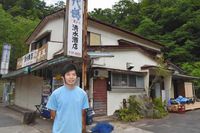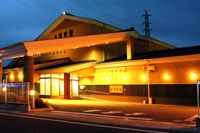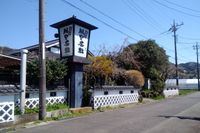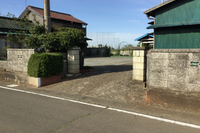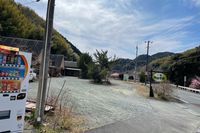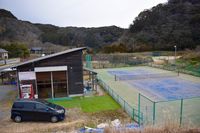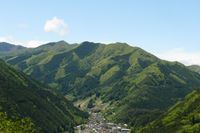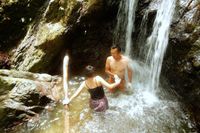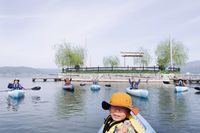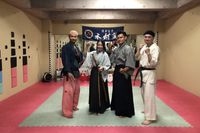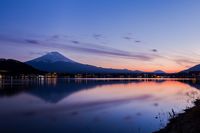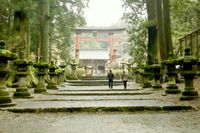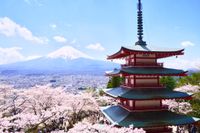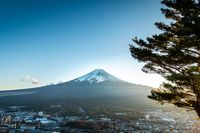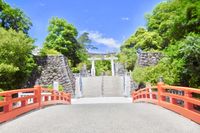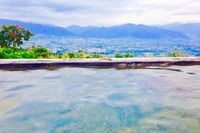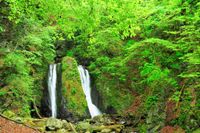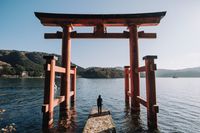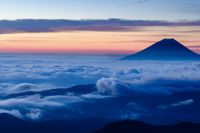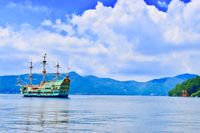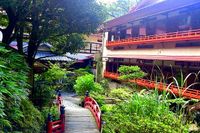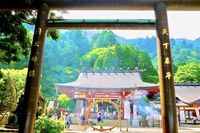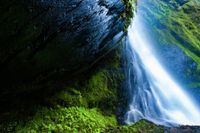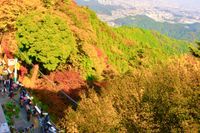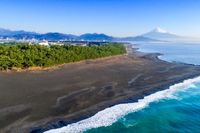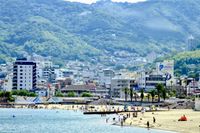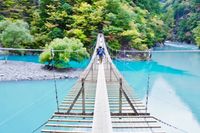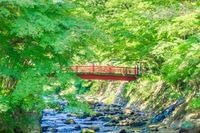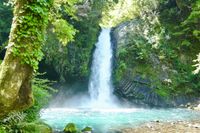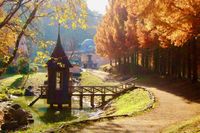Narusawa Ice Cave
山梨県/南都留郡富士河口湖町

Description
This is a 156 meter cave near Aokigahara cost. The area was formed by an eruption of Mount Fuji in 864 AD. At an underground depth of 21 meters, one can find the "tree pond" where there are beautiful ice pillars and stunning rock formations. This area is often visited along with the Fugaku Fuketsu Wind Cave which is situated nearby.
Homepage
Address
Nearby Car Night Spots
Kawaguchiko Yatai Village
¥2,500〜
/ per nightYamanashi Kawaguchi, Fujikawaguchiko Town, Minamitsuru District
4.5
(58)Railway Guest House Tetsunoya (hot spring available)
¥3,000〜
/ per nightYamanashi Shizume, Kasugai-cho, Fuefuki City
5.0
(15)Izunokuni City Nirayama "Dining Daikan Yashiki"
¥4,000〜
/ per nightSHizuoka Nirayamayamaki, Izunokuni City
4.8
(8)Mochimune Fishing Point RV Park - Calstreet
¥1,500〜
/ per nightShizuoka Mochimune, Suruga-ku Shizuoka-shi,
4.7
(3)(Power supply available/facilities for rain) Apples bonfire station Fruit Garden Kitazawa
¥4,000〜
/ per nightNagano Oshima, Matsukawacho, Shimoina-gun
4.9
(21)Nearby Activities
Organic Vegetable Picking at Microbe-NaturalFarmers
¥2,500〜
/ per personKanagawa Ken Fukuda, Yamato Shi
3.0
(0)FRC Surf School (Beginners Welcome!)
¥5,400〜
/ per personKanagawa Ken Kugenuma Kaigan, Fujisawa Shi
3.0
(0)Cycling in Shinjuku! From the tourist information center [INBOUND LEAGUE] which is in a good location and takes 20 minutes to Shinjuku Gyoen, Meiji Jingu and Yoyogi Park.
¥2,000〜
/ per personTokyo Shinjuku, Shijuku-ku
3.0
(0)Ranking Stations
Vanlife BASE | 45 min. from Narita Airport / Perfect for campervan travel/A seaside town rich in nature/Japanese countryside town/welcome traveler
¥7,000〜
/ per nightChiba Koseki, Kujukuri-machi, Sambu-gun
5.0
(61)(Bonfire BBQ) Chita Mihama Noma Beach Station
¥3,500〜
/ per nightAichi Noma, Mihamacho, Chita County
4.7
(42)Nearby Drive Spots
Lake Shoji
This is one of the five lakes of Mount Fuji, and is included as a world heritage site along with Mt Fuji itself. The area is popular for various famous photo spots of Mount Fuji, such as the "Double Mount Fuji" where it can be captured with its mirror image reflected in the water, as well as where Mount Fuji appears to overlap with the smaller Mount Muroyama.
Kitaguchi Hongu Fuji Sengen Jinja Shrine
A shrine built in the garden of Kino Toyohiro in 788 AD, this is a World Heritage Site along with Mount Fuji. The main Gods enshrined in the temple are Konohana-Sakuyahime, Ninigi no Mikoto and Oyamatsumino-okami. It is situated at the foot of the climbing path of Mount Fuji known as Yoshida-guchi, and many mountain climbers who worshipped Mount Fuji visited here. In front of the hall of worshippers there are two 1000 year old holy trees known as the "Fuji-Taro Cedar" and the "Fuji Cypress tree of married couples".
Arakura Fuji Sengen Jinja Shrine
This is a temple built in 705 AD, housing the Gods known as Konohana-Sakuyahime, Ninigi no Mikoto and Oyamatsumino-okami. During the Sengoku Era(1467-1600), the warrior Takeda Nobutora visited here, praying for war victory. The area is especially famous for what has been oft known as the "best view in Mount Fuji" with the 5 storied pagoda, cherry blossoms and Mount Fuji in the background, to produce some truly postcard-worthy camera shots.
Mount Fuji
Japan's tallest mountain at 3,776 meters and a registered World Heritage Site. Mount Fuji is a splendid sight and one of the most well known views of Japan. Mount Fuji has historically been known as an object of worship and holy site. The mountain is open to climbers between July and August.
Takeda Shrine
This is a shrine that was built by Takeda Shrine Association in 1919, where the warrior Takeda Shingen is deified as a shrine God. It is settled on the grounds of where the lodging house known as "Tutujigasaki Yakata", built by Takeda Nobutora. After the Russo-Japanese war in 1904, peopled wished for warriors and soldiers to be enshrined in the temple, which is why Takeda Shingen, a great warrior during the Sengoku era(1467-1600), was enshrined here, and is revered as the "Victorious God" even today.
Hottarakashi Onsen
This is an Onsen in Yamanashi prefecture. From the bathing area, you can see the Kofu basin below, and Mount Fuji is visible on a clear day. The onsen became well known as a place that opened early in the morning and ideal for viewing the sunrise. The name comes from the fact that there are no special advertisements or services provided, but is a place simply to have fun.
Kosuge Odaki Falls
Follow a 15-minute river trail deep into a thicket of shioji trees until it reveals a majestic rock, where the rapid of Tama River breaks in half and forms an absolutely breathtaking twin waterfall display. Kosuge Odaki Falls truly is a sight to behold and a favorite of many photographers.
Hakone Shirne
This is a shrine built in 757 by Mangan. It is said to house the God named "Ninigi", as well as the Gods "Konohana-Sakuyahime" and "Hikoho Hodemi no Mikoto". Mangan is also worshipped as a protector God after having slayed the nine headed dragon that ravished Lake Ashinoko. One of the most striking sights is the "Heiwa no Torii(The Gate of Peace)", built in 1952, that appear to float in the Lake Ashinoko.
Mount Kitadake
This is Japan's second tallest mountain at 3,193 meters high in the southern part of Yamanashi prefecture. The mountain is known as mount Shirane, (white topped mountain) due to the snow at the mountain caps. There is also a 600 meter rock wall known as "Kita-mine buttress". Towards the upper area of the mountain, there are splendid views of Mount Fuji with a sea of clouds below, for which this mountain is very popular. ※北岳より夜明けの富士山を望む © TAKAO_Tsushimaクリエイティブコモンズライセンス(表示4.0 国際)https://creativecommons.org/licenses/by/4.0/
Lake Ashinoko
This is a lake situated in Hakone. The Hakone Shrine can be found here as well as resort areas and other points of interest. Mount Fuji can also be viewed from here. Pleasure boats themed on pirate ships are also becoming popular in the area, as well as it being the end goal in the Hakone Ekiden annual marathon, and the start of the route back.
Hakone Onsen
This is an old spring Bath at the base of Hakone Volcano. It is a treasured area that has 20 hot spring baths, known as the Hakone Ni-ju-yu. The area has 1,300 years of history, and is famous due to Toyotomi Hideyoshi going to this area. During the Edo era(1603-1868), the area prospered as a hot spring spot in the Tokaido area, and was also revered by the house of the Tokugawa family.
Oyama Afuri Shrine
This shrine was built in 200BC. It houses the Gods Oyamatsumino-okami (Mountain God)Takaokamino-kami (Water God)Oikazuchino-kami (Thunder God) . Historically the mountain was considered a place of worship, and was visited by all types, from warriors to common people. Minamoto Yoritomo offered a sword to defeat Taira clan, and it is said that from this the culture of "Osamedachi" (sword offering) was born, and its influence can even be seen in Japanese Rakugo comedy and Ukiyo-e art.
Mitsugama Falls
This area contains three impressive waterfalls in Okutama, with a height of around 12.5m. It is truly an area to get away from the hustle and bustle of the city, with just the wind, water and the chirping of the birds. There are larger waterfalls in the upstream area, and the area is ideal of hiking.
Mount Takao
This is a 599m high holy mountain of the Shugendo religion (a fusion religion that originated in Heian Japan). The area was open to the public from 744 AD where Takao-san Yakuoin (a buddhist temple) was built. It is known as Tokyo's top autumn leaf spot, and has received three stars from the Michelin tourism guide. The area is also famous as a habit for the Japanese flying squirrel.
Miho no Matsubara
This is a scenic spot in Miho Peninsula, which is registered as a World Heritage Site along with Mt. Fuji. It is famous for the beautiful view of Mt. Fuji and Izu Peninsula, and has a total length of 7 km, with 36,699 pine trees and Suruga bay that comes in between. It has appeared in Manyoshu, the oldest Japanese poem in Japan, in Japanese ukiyo-e imagery and has fascinated many historians.
Atami Onsen
This is an old onsen in Atami. 1,500 years ago, during the reign of Emperor Ninken, Atami was given its name due to hot water that sprung from the beach water, as the Japanese characters for "Atami" literally mean "hot sea water". The area was admired by Tokugawa Ieyasu during the Edo era(1603-1868), and during the Showa era(1926-1989), became particularly famous as an onsen resort town, and is still famous as a beach and onsen town today.
Sumata Gorge
This is a valley of Sumata River in central Shizuoka prefecture. It is famous for its "dream suspension bridge" which is about 90 meters in length and extends to Oma dam lake and is about 8 meters in height. The name comes from the fact that it is not only meant to represent a fantasy landscape, but also because of the feeling of fear crossing it, almost as if in a dream.
Shuzenji Onsen
This is an old onsen in Izu. Its history is linked with Shuzenji Temple, and was opened 1,200 years ago by the Kukai who is the monk founded Shingon buddhism. During the Meiji Era(1868-1912) it was loved by writers such as Natsume Soseki, Akutagawa Ryunosuke, Shimazaki Toson, Kawabata Yasunari amongst others. There is an onsen town along the river, and is particularly popular for its bamboo forest.
Joren Falls
This is a waterfall that flows at the foot of Mount Amagi. The name came from Jyoren-ji Temple which used to be nearby. The waterfall is 25 meters high and 7 meters wide. At the side of the waterfall, there is a monument of Ishikawa Sayuri's hit song "Amagi goe" based on this area.
Tove Jansson Akebono Children's Forest Park
This is a park that is a recreation of Moomin's world (a famous cartoon originating from Finland), in Hanno, Saitama. Within the park, there is a "Moomin Mansion" where there is an exhibition dedicated to the author, Tove Jansson, as well as historical items relating to Moomin itself.

